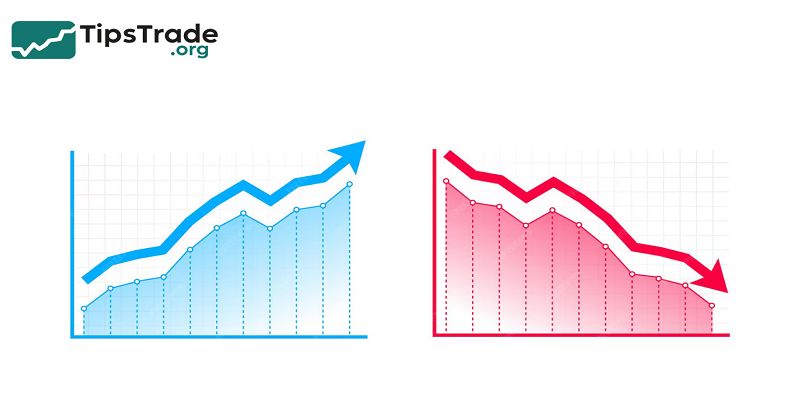Portfolio rebalancing is a vital investment strategy that involves periodically adjusting the asset allocation to maintain a desired risk level and investment goals. This process helps investors manage market fluctuations and avoid overexposure to any particular asset class. By regularly rebalancing, investors can optimize returns while controlling risk in their portfolios. For a detailed understanding of these risks, you may also explore resources at Tipstrade.org which provide expert insights and comprehensive analysis on IPOs.
What Is Portfolio Rebalancing?
- Portfolio rebalancing is the process of realigning the weights of assets in a portfolio to maintain a desired risk-return profile.
- Over time, market movements cause portfolio allocations to drift from their original targets — for instance, equities may outperform bonds, leading to an unintended higher exposure to risk.
- Rebalancing restores these allocations back to the investor’s strategic asset mix.
- In essence, portfolio rebalancing ensures that an investor’s risk tolerance and investment objectives remain consistent despite changing market conditions.
- It is not merely about buying or selling assets but about maintaining discipline and structure in portfolio management.
- According to Morningstar, portfolios that undergo regular rebalancing tend to exhibit smoother returns and lower volatility compared to those that do not.
- What is the NYSE? Understanding the New York Stock Exchange
- Market Cap Stocks: What They Are and Why They Matter for Investors
- What is Stock Liquidity? Why It’s Important for Investors
- Primary vs Secondary Market: Key Differences Explained
Why Portfolio Rebalancing Matters

- The importance of portfolio rebalancing lies in risk control and performance consistency.
- Without rebalancing, an investor may unintentionally take on higher levels of risk as asset classes appreciate unevenly.
- For example, during a bull market, equity exposure may balloon, leading to greater downside vulnerability when markets correct.
- Rebalancing enforces the principle of “buy low, sell high” — trimming overperforming assets and reallocating to underperforming ones.
- This contrarian discipline can help capture gains systematically and reduce emotional bias.
- From a behavioral finance perspective, rebalancing mitigates overconfidence and loss aversion.
- It converts investment strategy into a repeatable process rather than emotional reaction.
- A Vanguard study (2022) showed that annual or semi-annual rebalancing could improve portfolio risk-adjusted returns by up to 0.3% per year on average.
How to Rebalance a Portfolio
Rebalancing involves several deliberate steps:
- Review your target allocation.
Define your strategic asset allocation (e.g., 60% equities, 30% bonds, 10% alternatives). - Measure portfolio drift.
Compare current allocation weights to target weights. Many advisors use a threshold (e.g., ±5% deviation). - Decide rebalancing frequency.
Choose between calendar-based (e.g., quarterly, annually) or threshold-based approaches. - Execute trades strategically.
Buy or sell assets to restore the target allocation. Consider tax implications and transaction costs. - Monitor continuously.
Review after market events or major client life changes (retirement, inheritance, etc.).
Example:
| Target Allocation | Current Allocation | Adjustment Needed |
| Equities: 60% | 70% | -10% (Sell) |
| Bonds: 30% | 20% | +10% (Buy) |
| Alternatives: 10% | 10% | None |
This rebalancing would restore the portfolio to its strategic structure while keeping overall volatility aligned with client objectives.
Rebalancing Methods and Strategies

Different rebalancing methods cater to varying investment styles and portfolio structures:
- Time-based rebalancing:
Occurs at fixed intervals (e.g., quarterly or annually). It’s simple and predictable but may miss optimal timing. - Threshold-based rebalancing:
Triggered when asset allocations deviate beyond a pre-set tolerance band (e.g., ±5%). This method balances flexibility and discipline. - Hybrid approach:
Combines both — rebalances at scheduled times or when deviations exceed thresholds, whichever comes first. - Dynamic rebalancing:
Adjusts based on market volatility or macroeconomic indicators, often used by institutional investors or quant funds.
Each strategy has trade-offs between transaction cost, risk control, and responsiveness. Wealth advisors often tailor a hybrid strategy to each client’s behavioral and tax profile.
Determining Portfolio Rebalancing Frequency
- There’s no universal rule, but research from Vanguard and CFA Institute suggests that annual or semi-annual rebalancing typically offers an optimal balance between risk management and cost efficiency.
- Rebalancing too frequently can lead to excessive transaction costs and taxable events, while rebalancing too infrequently can cause significant drift.
- A study by Morningstar (2023) found that threshold-based rebalancing (e.g., 5% tolerance bands) outperformed fixed-interval rebalancing in risk-adjusted terms for diversified portfolios.
Key Considerations:
- Market volatility: higher volatility = more drift = more frequent rebalancing.
- Tax environment: taxable accounts may favor less frequent rebalancing.
- Liquidity needs: illiquid assets require strategic timing.
Tools and Technology for Rebalancing
Modern portfolio management tools have automated much of the rebalancing process.
Advisors use platforms such as:
- Morningstar Advisor Workstation
- Orion Portfolio Solutions
- Schwab Intelligent Portfolios
- Betterment for Advisors
- BlackRock Aladdin
These tools integrate risk analytics, tax optimization, and real-time drift tracking. Robo-advisors, in particular, employ algorithmic rebalancing to maintain portfolios daily within tight tolerance bands, ensuring consistency and scalability.
Common Mistakes in Portfolio Rebalancing
Even professionals can make errors when rebalancing. Common pitfalls include:
- Ignoring tax implications — triggering short-term capital gains unnecessarily.
- Overtrading — rebalancing too often in reaction to market noise.
- Neglecting correlation shifts — assuming asset correlations remain constant.
- Failing to rebalance across accounts — overlooking tax-advantaged vs. taxable accounts.
Successful wealth advisors mitigate these errors with systematic rebalancing rules, software alerts, and tax-aware optimization.
Tax and Cost Considerations
Rebalancing inherently involves trading, which can create tax events and transaction costs.
Tax-efficient practices include:
- Using tax-advantaged accounts (IRA, 401k) for rebalancing first.
- Employing tax-loss harvesting to offset realized gains.
- Utilizing cash flows (dividends, contributions) to rebalance passively.
- Considering ETFs or funds with in-kind redemption to reduce turnover impact.
According to Schwab, tax-aware rebalancing can improve after-tax returns by 0.20–0.50% annually, depending on portfolio complexity.
Portfolio Rebalancing for Institutional vs. Retail Investors

- Institutional portfolios often follow rule-based or automated rebalancing frameworks — e.g., risk parity or liability-driven investment (LDI) models.
- Retail investors, by contrast, face behavioral constraints and smaller scale.
- Wealth advisors bridge this gap by applying institutional discipline at an individual level, adjusting for liquidity, taxes, and personal goals.
- For example, endowments like Yale or CalPERS apply quarterly risk-based rebalancing, while advisors may opt for semi-annual threshold triggers in client portfolios.
Advanced Rebalancing Approaches for Wealth Advisors
For professionals managing sophisticated portfolios, traditional static rebalancing may be insufficient.
Advanced techniques include:
- Factor-based rebalancing — adjusts based on factor exposures (value, quality, momentum).
- Risk parity — equalizes portfolio risk contributions instead of dollar weights.
- AI-driven adaptive rebalancing — uses machine learning to predict drift and optimize timing.
- Smart beta overlays — rebalance to maintain factor tilt while minimizing turnover.
These approaches enhance alpha generation and drawdown protection while keeping the portfolio aligned with strategic mandates.
Maintaining Investment Discipline Through Rebalancing

- At its core, rebalancing is about discipline. It prevents investors from chasing returns or panicking during downturns.
- Behavioral research by Dalbar (2022) indicates that the average investor underperforms their portfolio by nearly 3% annually due to timing errors — disciplined rebalancing counteracts this bias.
- For advisors, consistent communication and reporting reinforce trust and demonstrate fiduciary rigor.
- Rebalancing transforms short-term volatility into long-term opportunity.
Conclusion
Portfolio rebalancing is a critical practice for investors seeking to preserve their desired risk-return profile and achieve long-term financial objectives. By systematically realigning asset allocations, investors can avoid emotional decision-making based on market swings and reduce the likelihood of significant losses from overexposure to certain sectors. Consistent rebalancing promotes diversification, improves portfolio stability, and supports steady growth over time. Therefore, incorporating portfolio rebalancing into an investment strategy is vital for maintaining control and optimizing performance in ever-changing markets.
See more:

